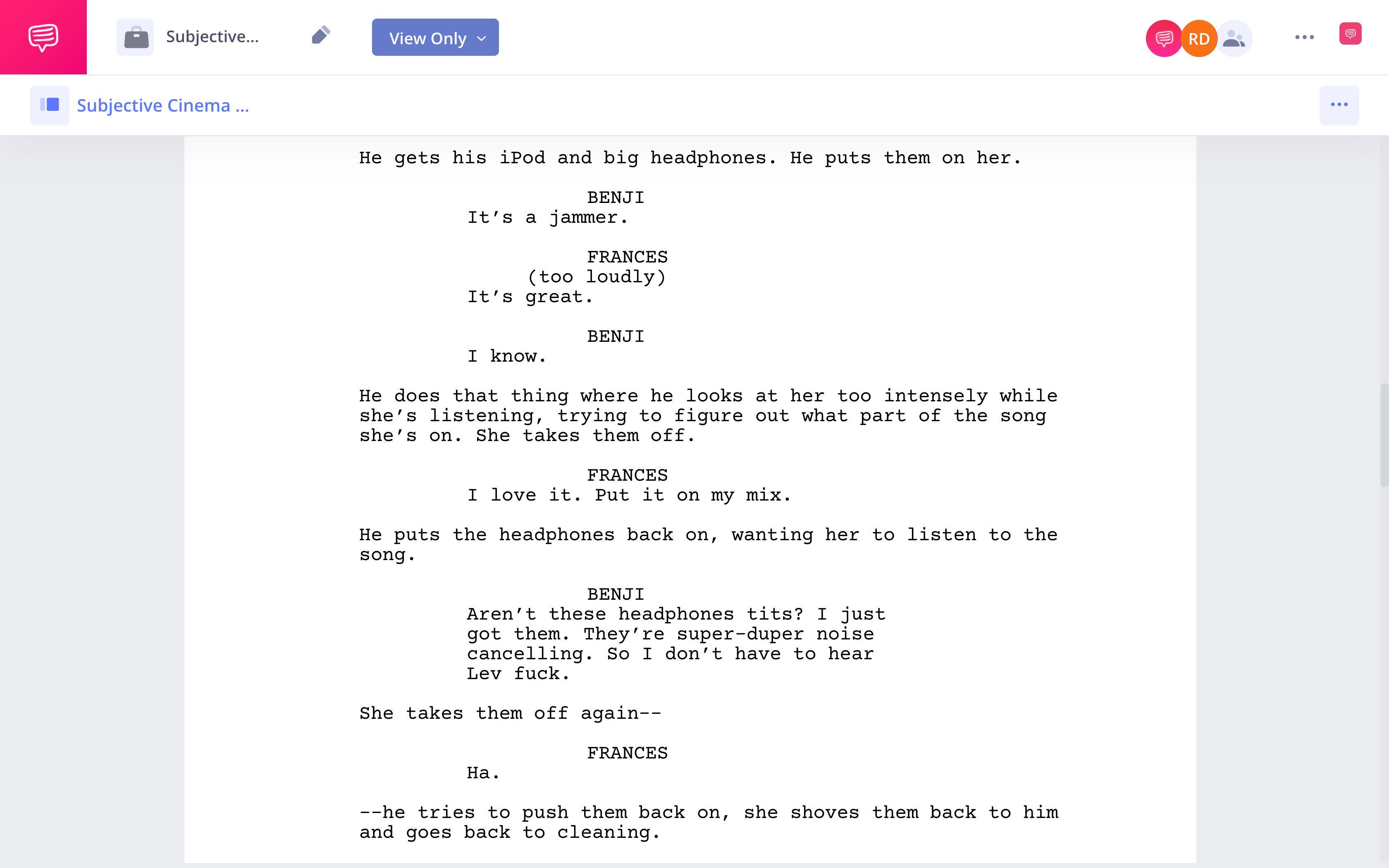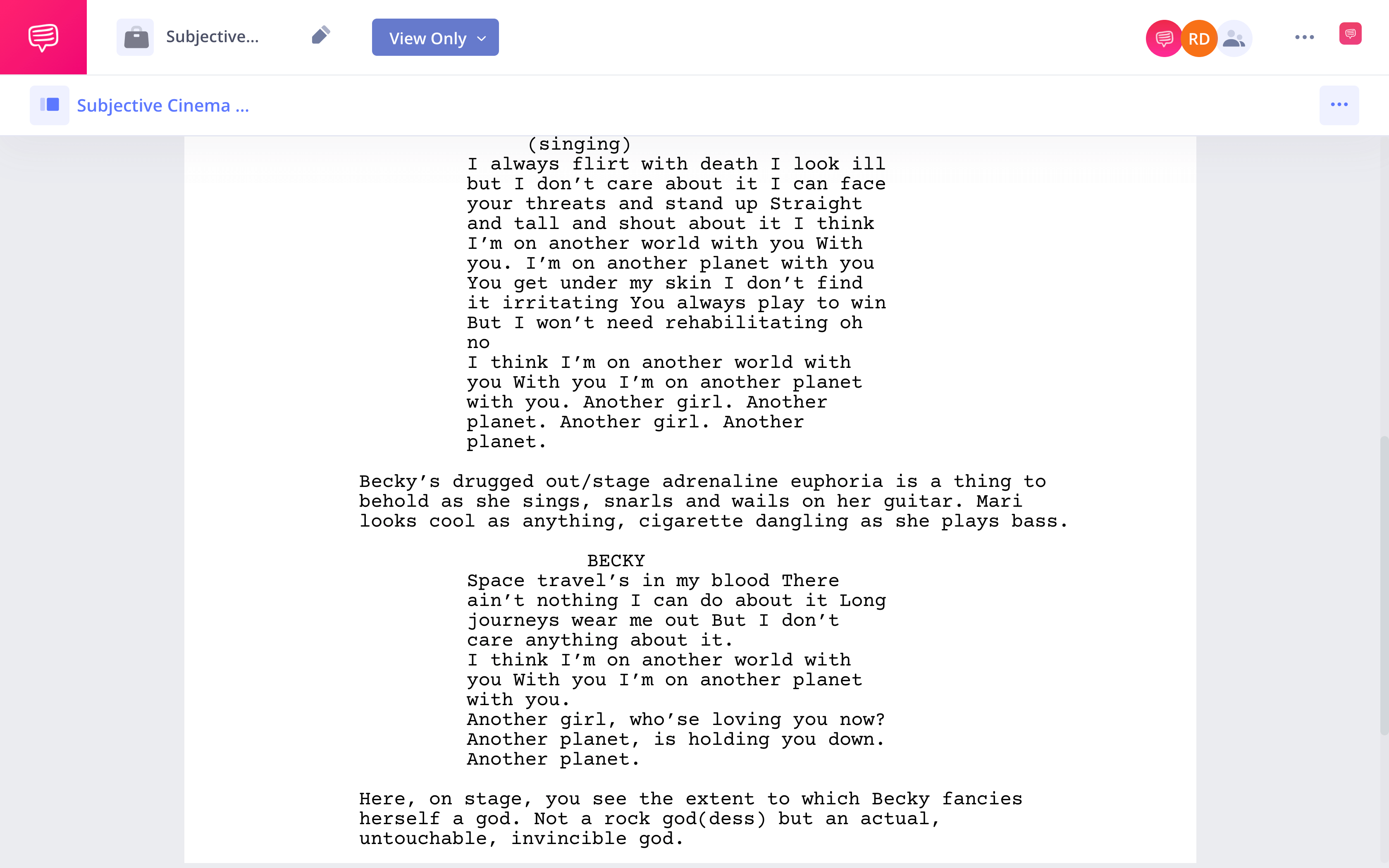Watching a film can sometimes feel like looking at the world through someone else’s eyes. This someone else may be a particularly auteurist filmmaker, or they can be a character within a movie that a filmmaker wants us to identify with. Referred to as subjective cinema, this filmmaking technique can be incredibly powerful.
Subjective Cinema Examples
What is Subjective Cinema?
Before we look at subjective cinema’s many applications and effects, it’s important to understand what exactly subjective cinema is. What makes a movie, shot, or scene subjective?
SUBJECTIVE CINEMA DEFINITION
What is subjective cinema?
Subjective cinema refers to a film, scene, or shot that emulates a personal point of view. This might be a camera angle from the literal point of view of a character, or it can be an editing choice that is informed by a filmmaker’s feelings or opinions. As you might be able to guess from this brief description, subjectivity in cinema can be applied broadly, just as a “point of view” can mean something very concrete or something more abstract.
Subjective Cinema Tools:
- Limited third-person screenwriting
- POV cinematography
- Personalized editing
Subjective Cinema Examples
Subjective vs. Objective
To have a good grasp on subjectivity, it’s necessary to understand its opposite: objectivity. Something is objective when it is removed from any personal perspective or bias.
Objectivity is typically sought after in fact-based media like scientific reports, historical recountings, or journalistic writing.
Here is a piece of objective writing:
"Star Wars came out in 1977, beginning one of the biggest franchises in movie history."
This states simple historical facts and dates, divorced of any personal feelings the writer may have about Star Wars, franchises, or the year 1977. Now, let’s look at a similar sentence that is injected with some subjectivity:
"1977 saw the release of Star Wars, a well-meaning film which had a regrettable effect on Hollywood, ending its period of artistic freedom and beginning an age of commercialized blockbusters."
Though the same facts are present in the sentence, they are colored by the author’s point of view. Star Wars’ “regrettable” influence and effect on Hollywood are not objective facts; they are part of the author’s argument.

Star Wars
It can be difficult to differentiate between objectivity and subjectivity. No matter how hard a writer tries, they cannot fully be divorced from their own point of view and feelings.
The same goes for filmmaking. Even the most “objective” nature doc is filled with subjectivity. A person decides where to place the camera, how long to hold on a shot, what music to pair with the footage, etc.. All these decisions are infused with a person’s point of view.

Who chose this shot from Planet Earth?
That said, subjectivity can also be manufactured on behalf of a character, where a film tries to emulate their perspective. In this regard, a movie can be very subjective or just barely. Let’s look at some ways subjectivity can be created and emphasized.
Subjective Cinema Examples
Subjective Writing
Subjectivity can be infused in each stage of the filmmaking process, from development and financing to post-production. To create a character’s subjectivity requires having a deep understanding of their psyche.
Most beginning screenwriters are taught to write as objectively as possible, or, in other words, to only write what the camera can see.
This often means avoiding interiority. A sentence like this won’t be found in most screenplays: “Gretchen walks down the street, thinking about the hard-boiled eggs waiting at home for her.” A camera wouldn’t be able to capture this.
But infusing a little subjectivity into a screenplay can have its uses, and is fairly common practice. Take snippet from Frances Ha, which we imported into StudioBinder’s screenwriting software:
Click the image link to read the entire scene.
Frances Ha script • Subjective point of view in film
Here, writers Noah Baumbach and Greta Gerwig do a little more than just describe what the camera can see. It adds a bit of comedy and color to the scene – we’ve all been in situations like the one Baumbach and Gerwig describe in the action as “that thing.”
Subjectivity can be increased even more through limited third-person writing. Limited third-person refers to writing in the third person but focusing on one character and their perspective.
This style of writing in a screenplay can indicate to the director that the story should be told from a specific character’s subjectivity.
Alex Ross Perry utilizes this approach in his screenplay for Her Smell:
Her Smell script • Subjective narration
Note how Ross hones his attention on Becky through careful wording in the action. Take this sentence: “Not a rock god(dess) but an actual, untouchable, invincible god.” This is fully inside Becky’s mind, and it indicates that this moment should prioritize her perspective.
Some scripts will push subjectivity even further. Christopher Nolan’s Oppenheimer screenplay and Gasper Noé’s Enter the Void are both written in first person. It should be stressed, however, that this is exceedingly rare.
Subjective Cinema Examples
Subjective Cinematography
Shot choices can also get an audience inside a character’s head. Perhaps the most obvious kind of subjective cinematography is the POV shot, where the camera literally shows us what the world looks like through a character’s eyes.
Noé did this for the entirety of Enter the Void, matching the intense subjectivity of his screenplay.
Enter the Void first person
But there are more subtle cinematic touches that can put an audience in a character’s mindset. Sometimes, it can come down to a simple lens choice. In Eternal Sunshine of the Spotless Mind, cinematographer Ellen Kuras puts a soft filter over the lens to mimic the dreamlike memories in Joel’s mind:
Eternal Sunshine of the Spotless Mind
The camera isn’t taking the place of Joel’s eyes, but it’s putting us in the dreamlike space that he’s inhabiting. Of course, it’s heightened by the special effects that make the world follow a dream logic.
Camera movement, too, can emulate a specific perspective. As we note in our video, David Fincher’s The Killer is an exercise in subjectivity. His cinematographer Erik Messerschmidt uses camera movement to indicate the kind of headspace the protagonist is in at a given time.
When The Killer is in control, camera movement is smooth and precise. When The Killer loses control, the camera is handheld and frenetic.
In this interview, Messerschmidt discusses his approach to subjective camera movement at length.
The Killer cinematography interview
As we mentioned previously, all cinematography is, to some extent, subjective. The choice you have when planning out your shots is whose subjectivity you want to emphasize in a particular moment, scene, or entire film.
Subjective Cinema Examples
Subjective Editing
Subjectivity can be extended to post-production as well. A simple cut can tell us about a character’s headspace, and even insert us into their viewpoint.
A common subjective technique is using faster cuts when a character is anxious or frightened.
In this scene from Silver Linings Playbook, editors Jay Cassidy and Crispin Struthers cut faster and faster to illustrate Patrick’s increasing panic.
Silver Linings Playbook editing
Music can play a huge role in creating subjectivity. Music can very quickly make us feel what a character is feeling.
If a character’s feeling sad, for example, a particularly melancholy song may make the audience feel the same way.
In this scene from Dazed and Confused, Bob Dylan’s raucous “Hurricane” plays as Wooderson enters The Emporium. Paired with the dolly shot that is from Wooderson’s POV, we enter the character’s headspace. Entering this bar, Wooderson feels like the champion of the world.
Dazed and Confused
Sound design more broadly can also slip an audience into a character’s perspective. This is done in the Killer with the music the protagonist listens to throughout.
But perhaps the most famous use of subjective sound design can be found in Saving Private Ryan’s D-Day scene. Take a look, and listen, at the sequence:
Saving Private Ryan
When the camera moves in on Captain Miller’s face, the immersive sounds of war around him become muffled. This focuses our attention on Miller’s interiority. He can’t begin to compute the horror he's just been thrown into. He’s overwhelmed, and so the sound around him falls away.
As the D-Day sequence illustrates, subjectivity can be one of the most powerful tools a filmmaker has. Cinema can transport us to worlds we’ve never seen. Subjective cinema can make us see worlds in a new way.
Up Next
Breaking the fourth wall
Breaking the fourth wall is, in a way, the opposite of subjective cinema. It makes the audience aware that the camera is a stand in for us. Instead of seeing the world from a character’s perspective, the character is addressing our own perspective. Check out our breakdown of the tool.


